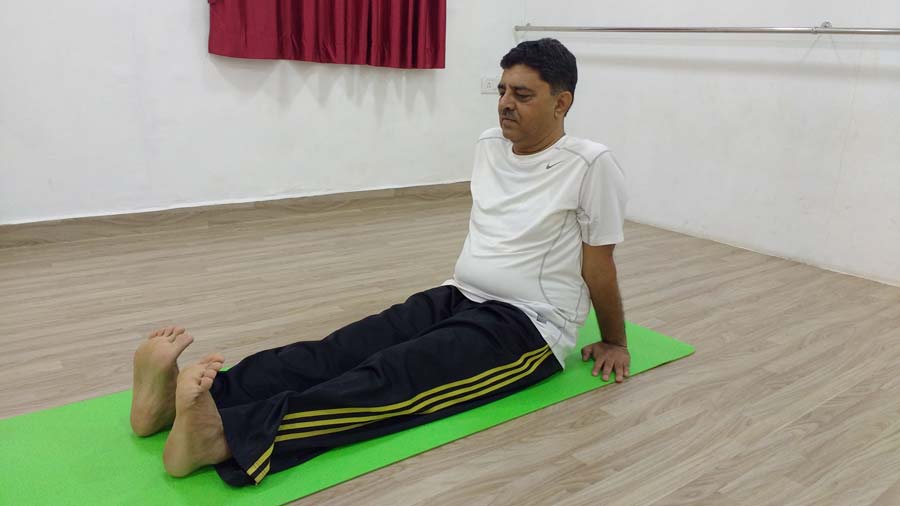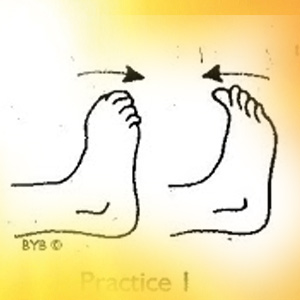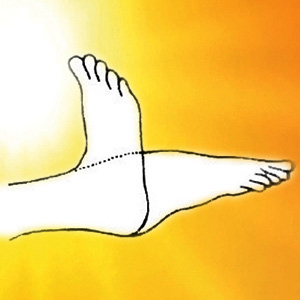Table of Contents
Toes & Ankle Bending – Pawanmuktasana Series 1
In Sanskrit “Pawan” means “wind” or “prana”; “Mukta” means “release” and “Asana” means “pose”. Therefore, Pawanmuktasana series 1 remove the toxins and energy blockages in the body. The series is one of the special contributions by Swami Satyananda Saraswati to mankind. The series can be performed by a beginner or advanced, young and elderly, male or female, or any other practitioner of Yoga as they are simple, gentle, and comfortable. In this blog, Toe and Ankle bending have been covered.
Pawanmuktasana Series 1 Benefits
Due to bad posture, psychological problems, emotional problems, and an unbalanced lifestyle, the flow of pranas or the energy is blocked in the body. This initially results in –
- Muscular Tension
- Stiffness
- Lack of proper blood flow and
- Minor functional defects
However, if these blockages are allowed to become chronic, then it may result in malfunctioning of either a limb or a joint, or even an organ. Further negligence of the problem may even lead to the failure of these parts of the body.
Regular practice of some simple exercises of Pawanmuktasan series 1 will help in avoiding such conditions. The series, also called ‘Anti-Rheumatic group’ is aimed at removing the energy blockages from the body and prevent the new one from forming. It is aimed at loosening up the body joints and is good for people suffering from arthritis, hypertension, heart problems or any other ailment where hard physical exercise is not advised.
There are 17 practices in this group, and in this post, first 2 of these practices, working with toes and ankles are described.
Most of the practices of Pawanmuktasana Series 1 are performed while sitting on the floor in the base position (Prarambhik Sthiti).
Prarambhik Sthiti (Base Position)
- Spread a Yoga Mat on a plane surface and sit with legs stretched, feet close but not touching each other.
- Place the palms on the floor just behind the buttocks and just by the sides.
- The back, neck, and head should be in a line.
- Lean back slightly and take the support of the arms.
- Relax for some time with the eyes closed.
Padanguli Naman (Toe Bending)
- Sit in the base position.
- Become aware of the toes and relax them.
- Move the toes of both feet slowly backward and forward,
- Keep the feet in upright position.
- Hold each position for a few seconds.
- Repeat 30 to 40 times.
Maintain the awareness on the movement of the toes and stretching so produced therein.
Goolf Naman (Ankle Bending)
- Sit in the base position.
- Become aware of the ankle joint and start moving the feet backward and forward, bending them from the ankle joints.
- Stretch the feet forward as if you are trying to touch the floor with the toes.
- Draw the feet back towards the knees.
- Hold each position for a few seconds.
- Repeat 5 times.
The awareness in the practice should be on the stretch in the foot, ankle, calf, and leg.
Toe Bending & Ankle Bending Benefits
- Toe Bending and Ankle Bending relieve tiredness and cramps of the legs.
- Both of the above exercises loosen up the thigh, knee and ankle joints.
- The exercises also strengthen the muscles and joints of the legs.
- These exercises of Pawanmuktasana Series 1 help return stagnant lymph and venous blood.
- Energy blockages are removed from the ankles and toes facilitating the flow of pure blood in legs.
This series of exercises should be performed at the beginning of the daily Yoga session to loosen the joints and make the muscles supple. They are also intended and very good for beginners and for those who are weak. These exercises are also good for people with heart problems or high blood pressure or stiffness in the body.
For further knowledge detail on Pawanmuktasana Series 1, please read –
Pawanmuktasana Series 1 – Part 2 – Ankle & Knee Exercises
Pawanmuktasana Series 1 – Part 3 – Butterfly Yoga Asana & Hip Rotation
Pawanmuktasana Series 1 – Part 4 – Hand & Wrist Asanas



